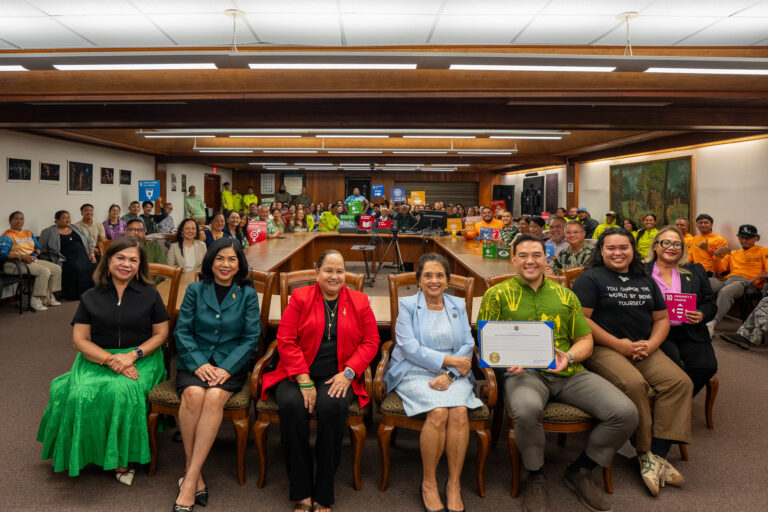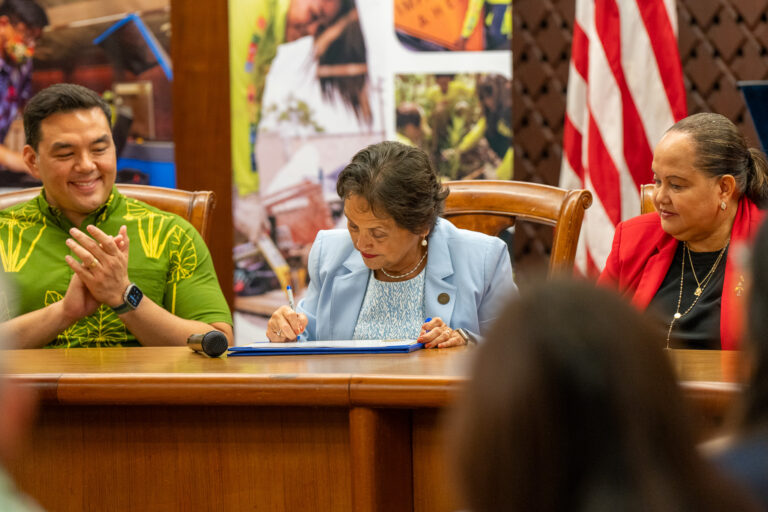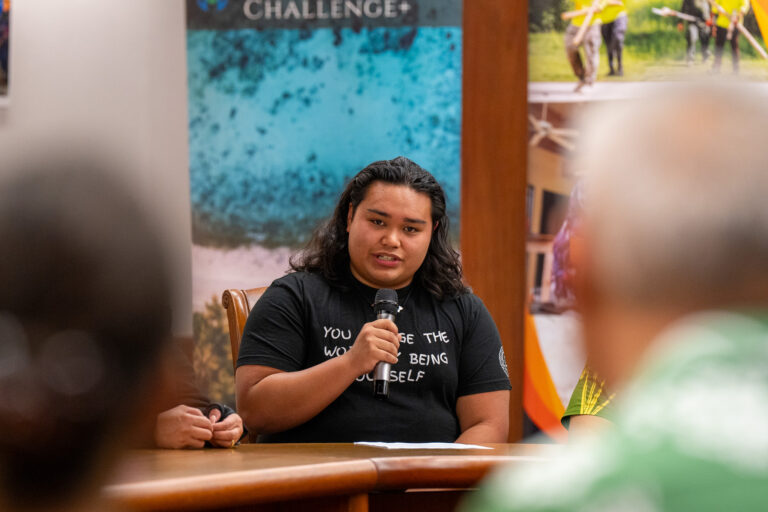


The University of Guam, Guam Green Growth (G3), and partners launched Sustainable September with a proclamation signing, highlighting the multi-sectoral efforts that laid the foundation for the islands’ progress in achieving the 17 United Nations Sustainable Development Goals (SDGs) by 2030.
Sustainable September’s month-long activities are organized by G3 and the UOG Center for Island Sustainability and Sea Grant, including the proclamation signing at the Governor’s Complex in Adelup.
As a catalyst for G3, Guam NSF EPSCoR promotes Sustainable September and its long-term goal of achieving the UN SDGs by 2030.
At the signing, UOG President Anita Borja Enriquez, DBA, lauded G3’s efforts in pioneering an initiative that promotes collaboration in attaining the UN SDGs, saying that sustainability is a collective responsibility.
“It is not just a concept but really it is a movement. We have seen this through the collective efforts of our partners across government, nonprofit, private sectors, and individuals, and how through the efforts of the Guam Green Growth initiative, we are building capacity in the workforce,” Borja Enriquez said.
Enriquez co-chairs the G3 initiative alongside Gov. Lou Leon Guerrero, who also remarked on the momentum of the G3 movement in creating greater sustainability not only on Guam but in the region by partnering with other island jurisdictions. The Governor mentioned the recently created Green Growth initiatives in the Marshall Islands, Palau, and the Commonwealth of the Northern Mariana Islands as examples.
Meanwhile, UOG Center for Island Sustainability and Sea Grant Director Austin Shelton, Ph.D., emphasized that sustainability has always been part of the way island communities lived and interacted with each other, “For 4,000 years, sustainability has been ingrained in island life. That’s why we are making a significant impact in everything we do; sustainability is interdisciplinary, and everyone has a role to play.”
UOG Center for Island Sustainability and Sea Grant Associate Director for Communications and Community Engagement Kyle Mandapat, MBA, stated that in addition to the signing of the proclamation, Sustainable September’s month-long activities feature a lineup that highlights these multi-sectoral partnerships, including tree-planting events organized by the Guam Restoration of Watersheds (GROW) initiative at the Ugum watershed.
Other activities lined up for the month:
- Sept 17 – Maila Ta Fan Chesa, hosted by the Micronesian Chefs’ Association in partnership with the American Culinary Federation and the UOG Center for Island Sustainability and Sea Grant. The event, which will be held at the Hyatt Regency Guam, will feature locally sourced ingredients and fish from UOG Sea Grant’s aquaculture systems, with proceeds supporting local culinary students.
- Sept 20 –Guam’s 31st International Coastal Cleanup, starting 6:30 AM. The Guam Coastal Management Program organized the event. G3 and the UOG Center for Island Sustainability and Sea Grant. will be assisting at the cleanup sites in Adelup and Andersen Air Force Base.
- Sept 20– Sustainable Aquaculture Workshop, from 3–5 PM. Guåhan Sustainable Culture will host the workshop at the GSC Food Resiliency Hub in Yona (former Hamamoto Gardens).
- Makerspace Workshops for September:
- Sept 25 – 3D Modeling & Printing Workshop, from 5 to 7 PM, at the G3 Makerspace and Innovation Hub.
- Sept 25 – Printmaking workshop, from 5 to 7 PM, with Joey Certeza at the G3 Makerspace and Innovation.
Sustainable September activities support the 2030 Agenda for Sustainable Development, which was adopted by the UN in 2015. This plan highlights the urgent need to address key global sustainability challenges before the 2030 deadline for achieving the 17 UN SDGs.
Guam’s commitment to achieving the SDGs by 2030 was firmed up when it became a founding member of Local2030 Islands Network in 2019. This network provides an island-led, peer-to-peer platform to advance SDG progress, which eventually led to the launching of G3.


























